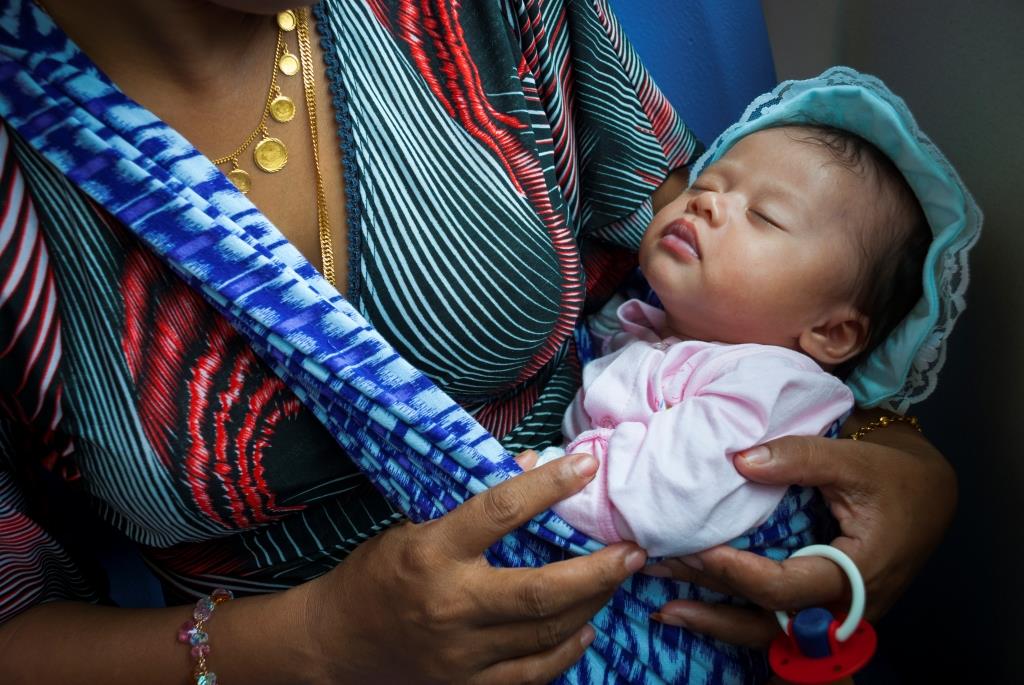3.7 Inclusion of Pregnancy Outcomes
‹View Table of Contents
Possible responses:
- Live births
- Stillbirths
- Spontaneous abortions/miscarriages
- Elective terminations of pregnancy with fetal anomalies, also known as ETOPFA
- Elective terminations for other reasons
If possible, surveillance programmes should aim to ascertain congenital anomalies among all pregnancy outcomes, with the exception of early spontaneous abortions. Including as many types of pregnancy outcomes as possible improves case detection. Inclusion of live births alone is a significant limitation that can lead to unreliable rates and trends, particularly for conditions with a high rate of loss prior to 28 weeks. An example of such a condition is anencephaly. Inclusion of pregnancy outcomes is dependent on a country’s ability and resources to detect all or most outcomes. In some countries, it can be difficult to include stillbirths and ETOPFA. If a country has the capacity to ascertain stillbirths, doing so can help provide a more accurate estimate of the prevalence of a condition like anencephaly.
Group Discussion 3.5
Possible responses:
- ≥ 28 weeks of gestation
- ≥ 1000 g if gestational age unknown
- However, some countries may define stillbirths as ≥ 20–22 weeks of gestation or ≥ 500 g if the gestational age is unknown.
Write responses on the flipchart.
Write responses on the flipchart.
Write responses on the flipchart.
Write responses on the flipchart.
Write responses on the flipchart.
Write responses on the flipchart.
Activity 3.2
Ask participants to refer to Activity 3.2 worksheet in the Participant Workbook.
Ask participants to keep in mind capacity and available data sources. Remind them that the inclusion and exclusion criteria will be different, depending on whether the programme is hospital based or population based. Allow 10 minutes and then discuss the responses as a group.
Possible responses:
- Inclusion criteria:
- Born with one of the congenital anomalies under surveillance
- Age at diagnosis (up to 1 year of age)
- Pregnancy outcome (live births, stillbirths and termination of pregnancies
for fetal anomaly) - Gestational age (≥28 weeks, or ≥1000 g)
- Maternal residence (born to resident mother)
- Exclusion criteria:
- Born without a congenital anomaly under surveillance
- Older than 1 year of age
- Miscarriage/spontaneous abortion
- Less than 28 weeks of gestation, or less than 1000 g
- Born to non-resident mother
Response: A case is defined by the surveillance programme’s inclusion criteria.
Response: No, the surveillance programme includes only live births. If the inclusion criteria of the surveillance programme considered stillbirths as cases, then the neonate would be included.
Response: It will depend on the guidelines of the hospital. If the hospital registers this neonate as being born at the hospital, then he/she would be included. If the inclusion criteria of the surveillance programme have this possibility as a case, then the neonate would be included.
Response: It will depend on the inclusion criteria of the surveillance programme. In a hospital-based surveillance programme, the neonate would not be included.
Response:
- In a population-based surveillance programme, the neonate would not be included, because the mother is not from the defined geographic area. However, if the mother has been living in the country within the catchment area for a time period specified in the inclusion criteria, then the neonate would be included.
- In a hospital-based programme, the neonate would be included unless the inclusion criteria state that only residents of the country should be registered.
Response:
- In a population-based surveillance programme, if, for example, residence is defined as the mother’s primary address during the 3 months prior to pregnancy and the first trimester of pregnancy, the neonate would not be included, because the mother is not from the defined geographical area.
- In a hospital-based programme, the neonate would be included, regardless of the length of time the mother has lived in the country. This is unless the inclusion criteria state that only residents of the country are registered.
Response: Since the criterion for inclusion is congenital anomalies identified during the first three days of life, the child would not be included. The response is the same if the congenital anomaly is identified at one month or two years of age.
Response: If stillbirths are not included, some severe congenital anomalies will be underreported. For example, most fetuses with anencephaly are stillbirths. Therefore, the birth prevalence for anencephaly will not be accurate if only live births are counted.
Response: The neonate would not be captured if the only data source is the delivery ward log. However, if there is a note in the protocol and inclusion criteria to also include all neonates with congenital anomalies from the obstetric operating theatre/room, then this neonate would be captured.
Response: The neonate would not be included, because his/her weight is below 1000 g.
Response: The fetus would not be included, because prenatal diagnosis was not confirmed at birth.
Response:
- Including live births, stillbirths and terminations will provide a more accurate prevalence of the congenital anomaly.
- If the surveillance programme has resources and is able to have an age threshold of one year instead of the first three days of life, it will generate a more accurate prevalence of each congenital anomaly. If the surveillance programme can only capture births of 28 weeks of gestation or more, or 1000 g or more, many stillbirths with congenital anomalies will be missed.
Table of Contents
- Module 3: Introduction to Surveillance Approaches
- 3.1 Epidemiology
- 3.2 Population Coverage
- 3.3 Case Ascertainment
- 3.4 Case-Finding
- 3.5 Case Inclusion
- 3.6 Inclusion Criteria
- ›3.7 Inclusion of Pregnancy Outcomes
- 3.8 Description Formats for Congenital Anomalies
- 3.9 Core Ascertainment Variables
- 3.10 Data-Collection Methods and Tools
- 3.11 Data Collection/Management
- 3.12 Data-Management Protocol
- 3.13 Data Analysis
- 3.14 Data Dissemination
- 3.15 Evaluation Questions 3
